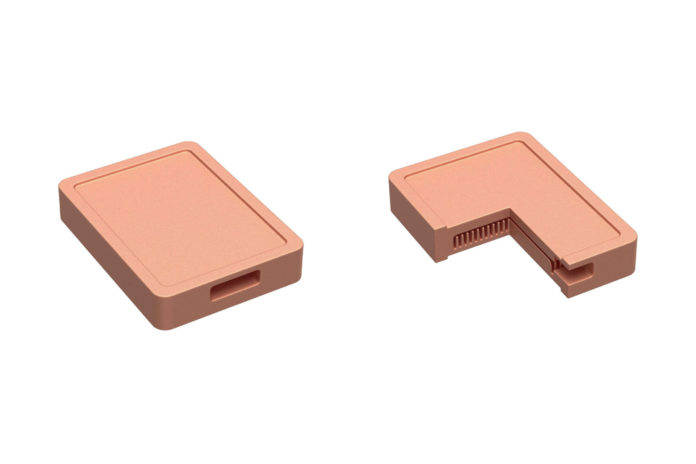Additive Manufacturing Company Desktop Metal has announced the qualification of Pure Copper for its Binder Jetting technology. The material is the fifth to be qualified for its Production System. It follows the recent addition of 420 Stainless Steel to the company’s materials portfolio.
The recent years saw the emergence of Copper 3D Printing/Additive Manufacturing. Known for its ability to deliver excellent thermal and electrical conductivity, the material is ideal for applications requiring heat or electricity transfer, such as cold plates, pucks and manifolds, heat sinks, heat exchangers, and bus bars used in power-intensive electrical applications.
Described as the third-most-consumed industrial metal in the world, Desktop Metal’s team has qualified and fully characterized commercially pure copper (C10300) printed on Production System technology with greater than 99.95 percent purity.
By using pure copper on the Production System, manufacturers can explore the production of parts with significant geometric complexity in a single step instead of brazing multiple conventionally produced copper components together, eliminating a time-intensive and expensive process prone to error and waste.
With the geometric freedom enabled by binder jetting, engineers can also explore new, high-performance designs not possible with conventional manufacturing methods, such as the lattice structures and conformal cooling channels to improve heat transfer, the company notes.
An example of key application the team explored during this qualification process is a liquid cooling plate, which is used to regulate temperature on high-performance microprocessors.
“Coolant flows through the fins, which provide a large surface area to transfer heat from the passing fluid to the heat sink in order to cool the chip that is attached to the outer body. These cooling geometries typically require capital-intensive, long lead time, and skilled labor-intensive production processes, such as skiving and machining, given the challenges associated with achieving precision and repeatability in such a small form factor. In addition these commonly used conventional manufacturing processes are subtractive and produce excess scrap material, greatly increasing the associated part costs.
Whereas conventional production methods for this liquid cooling plate required machining and assembling multiple separate components due to restrictions on tool access, binder jetting on the Production System can produce the part as a single component, reducing manufacturing and operational complexity, part cost, and lead time. The Production System unlocks the capacity to print hundreds of cooling plates per day, enabling cost-effective volume production. Copper is the ideal material for heat exchangers due to its excellent conductivity, maximizing heat dissipation from the electronic chip to the cooling fluid”, the company explains.
Remember, you can post job opportunities in the AM Industry on 3D ADEPT Media free of charge or look for a job via our job board. Make sure to follow us on our social networks and subscribe to our weekly newsletter : Facebook, Twitter, LinkedIn & Instagram ! If you want to be featured in the next issue of our digital magazine or if you hear a story that needs to be heard, make sure you send it to contact@3dadept.com






